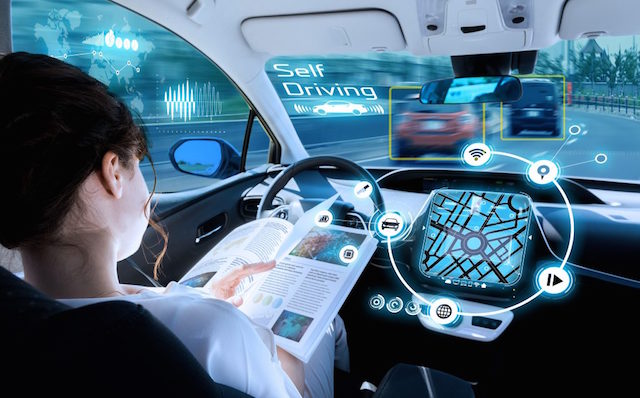
Technology giant IBM predicts a future for carmakers where the focus for buyers will be more on the digital services the car provides, rather than the cars themselves.
Daniel Knodler, IBM’s director of global sales for its automotive, aerospace and defence groups, says what happens on the screens inside the car will be far more important than the badge on the outside.
“Automotive companies have a decision to make,” Knodler told London’s The Telegraph newspaper. “They can seize the opportunity to reinvent their organisations through digital technology – unleashing new experiences, new focus, new ways to work and new workforce skills. Or they can continue down their current path, running down the clock and risking obsolescence.”
It’s the potential proliferation of digital services that IBM says will make the branding of cars almost obsolete. “We see the focus on integration with personal devices, customer experience, personalisation, as being so important to the automotive industry,” says Knodler.
An IBM study, entitled Automotive 2030 – Racing Towards A Digital Future, found 48 per cent of car owners said that in a world where cars are provided as self-driving, autonomous vehicles, brands would no longer matter. Cost and convenience will be all that counts.
Knodler (above) painted a picture: “It’s a sunny Monday morning and you’re ready to head to work. The vehicle – let’s call it ‘ACES’ (Autonomous, Connected, Electrified and Shared) – that you ordered on Sunday night arrives, so you get in.
“The first thing ACES does is wish you a happy birthday. Next, it plays Happy Birthday to You and shares social media greetings from family and friends through its infotainment centre.
“ACES starts driving you to your destination while alerting you to upcoming traffic issues. It suggests alternative routes and asks if you want to pick up your dry cleaning en route.
“It scans your health vitals and coordinates with your fitness app. It checks your house in case the TV or other appliances were left on, and downloads the audio book you listened to earlier.
“Does this all sound a bit far-fetched? In fact, thanks to digital technologies, these and many other vehicle capabilities and mobility services are expected to be readily available by 2030.”
It’s a trend that the car industry has been tracking for some time. With the rise and rise of personal digital devices and the growing level of connectivity between them and the cars we drive, there is a sense that the experience is now more important than the engineering.
But while IBM’s predictions are to be treated with respect, there are a few get-out clauses for the carmakers in all of this. For a start, even IBM thinks that premium brands will suffer less in this environment than more everyday cars.
Knodler says: “I think there is no real contradiction there. We don’t predict that the ownership model regarding cars will decline rapidly, and we would see it declining very slowly for the premium brands that are differentiating themselves through both their products and their services.”
The decline of the car brands is also predicated on the full and final emergence of autonomous technology, cars that can entirely and safely drive themselves, and there are still major question marks over that.
Even actual rocket scientists think that self-driving cars are tough to bring to the mass market. Dr Steve Chien (above), head of NASA Jet Propulsion Laboratory’s artificial intelligence work, told The Telegraph: “I would actually say that making a self-driving car and navigating around the streets of, say, Dublin, is quite a bit more challenging than an autonomous spacecraft.
“If we send a spacecraft to Europa, we’re going there because we know very little about it. But we’re fairly certain that it won’t have to deal with the variables of a bunch of crazy people driving about on the street, dealing with rain.”
- SAE International, the engineering standards body, defines six levels of vehicle autonomy. These are used to evaluate the technological sophistication of any driving automation system, based on the amount of human interaction required.
Level 0: Effectively a standard vehicle that can issue warnings to the driver but has no control.
Level 1: Fairly commonplace technologies such as Adaptive Cruise Control (ACC), Parking Assistance with automated steering, and Lane Keeping Assistance (LKA) Type II. The driver must be ready to take control at any point.
Level 2: The driver must keep track of objects and events, in case the automated system fails to respond properly. However, the car can accelerate, brake and steer by itself.
Level 3: The car is capable of monitoring its surroundings and within relatively predictable contexts, such as motorway driving, the driver safely so other things – although must still be ready to take back control if needed.
Level 4: The vehicle can drive by itself in all but the most unpredictable environments. The driver does not normally need to pay attention once the autonomous system is activated.
Level 5: No human intervention is required, other than setting the destination. The vehicle is capable of driving safely by itself and making appropriate decisions.



